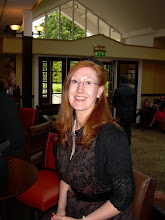
Last weekend I went to see Reunited: Gwen John, Mere Poussepin and the Catholic Church at the Barber Institute of Fine Arts, University of Birmingham, and was surprised and pleased to find a different John to the one I had enjoyed at the Tate’s John retrospective a few years ago. The exhibition blurb explains the background to these portraits:
"Gwen John’s move to Meudon in France in 1911 marked the beginning of fundamental changes for the artist, in both personal and artistic terms. In about 1913, John was received into the Roman Catholic Church, and, in that year, was commissioned by the nuns in the town’s convent to create a portrait of their seventeenth-century founder, Mère Poussepin. This first commission developed into requests for five more versions — one for each room of the convent. In this exhibition, the Barber’s own version of the portrait—one of the most popular paintings in the collection — is reunited with other versions of the picture. These are complemented by a series of drawings showing women, orphans and schoolgirls in church, as well as sketches of nuns, priests and a cardinal — and even the Pope himself."
John was given a prayer card with a portrait of Mere Poussepin, from which to paint the portraits. This she did painstakingly over 16 reworked versions, changing aspects of it along the way whilst retaining the "pure perfection" of the holy woman’s face. The earlier ones depict Mere Poussepin looking severe, or even slightly smug, sitting at a table with a book; the later ones are simplified (such as the one shown here), having done away with the props and with the beatific face of the nun radiating her divine beliefs.
"Gwen John’s move to Meudon in France in 1911 marked the beginning of fundamental changes for the artist, in both personal and artistic terms. In about 1913, John was received into the Roman Catholic Church, and, in that year, was commissioned by the nuns in the town’s convent to create a portrait of their seventeenth-century founder, Mère Poussepin. This first commission developed into requests for five more versions — one for each room of the convent. In this exhibition, the Barber’s own version of the portrait—one of the most popular paintings in the collection — is reunited with other versions of the picture. These are complemented by a series of drawings showing women, orphans and schoolgirls in church, as well as sketches of nuns, priests and a cardinal — and even the Pope himself."
John was given a prayer card with a portrait of Mere Poussepin, from which to paint the portraits. This she did painstakingly over 16 reworked versions, changing aspects of it along the way whilst retaining the "pure perfection" of the holy woman’s face. The earlier ones depict Mere Poussepin looking severe, or even slightly smug, sitting at a table with a book; the later ones are simplified (such as the one shown here), having done away with the props and with the beatific face of the nun radiating her divine beliefs.
The exhibition demonstrates John's own convictions and her reverence for the spiritual life which she discovered after turning to Catholicism following the end of her relationship with Rodin. The paintings carried out in the French convent demonstrate a completely human face of the contemplative, devotional life which is spiritually uplifting. This little exhibition gives a totally different insight into John's work than any I had had before, though I am not sure I endorse the comment of Charles Darwent in the Telegraph, who called these paintings "Austen for the eyes" - this is something far more reverential and divine - perhaps a visualised Christina Rossetti...
There is a small "virtual exhibition" on the Barber's website if you want to see more.











No comments:
Post a Comment